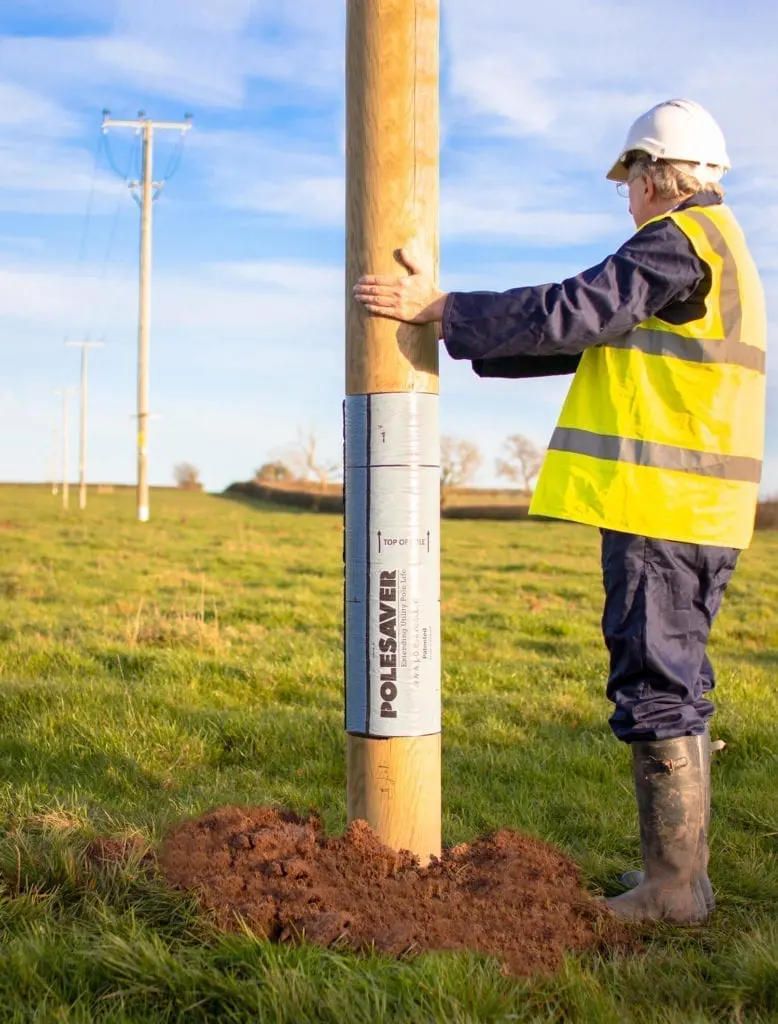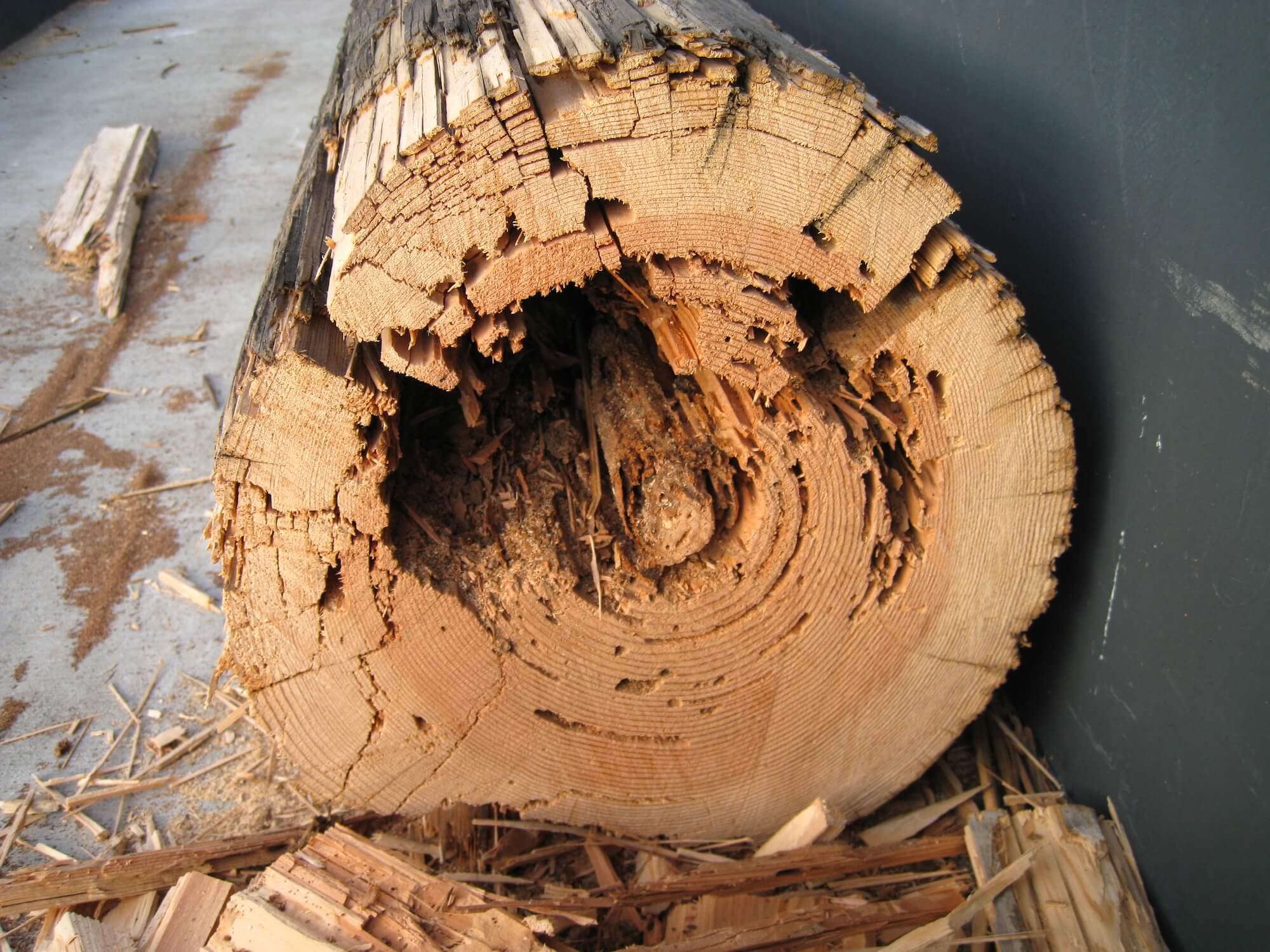In our current era, we are faced with several critical environmental challenges. Identifying the areas in which we can minimise our impact on the environment is fundamental to ecological success. As utility providers, this involves identifying the areas where the life expectancy of assets, such as utility poles, could be increased.
The utility pole market is currently experiencing significant growth as older networks reach the end of their life. Globally around 20 million utility poles are replaced every year. The environmental impact of this is significant. Independent market research indicates that approximately 50% of replacement utility poles are made from wood, with 37% made from steel, 10% from concrete and 3% from composites.

All stages of utility pole life, including manufacturing, installation and disposal, have environmental impacts. Understanding how different materials affect the environment is essential. These effects give a greater understanding of how we can implement more sustainable practices into utility specifications.
Non-wood utility poles begin their life with the extraction of resources. The necessary primary resources required are generally fossil fuels and water, which in turn lead on to the further potential for ecological damage. Concrete, for example, requires high proportions of fossil fuels and water relative to the quantity produced. Concrete production is undoubtedly damaging to the environment. Galvanised steel poles also use large amounts of fossil fuels in production. Composite pole manufacturing does not use as many fossil fuels as concrete but more so than galvanised steel.
Composite pole manufacturing, however, is by far the worst when we look at the water used in production, which is considerably higher than any other material. Composite poles use an estimated 1,248 gallons of water per pole. Wooden poles such as a Pentachlorophenol treated pole in contrast use only 46 gallons of water per pole, and by far the lowest amount of fossil fuels of any material.
All pole types produce anthropogenic greenhouse gasses and ecotoxicity air emissions in production. The worst effect of utility pole types, however, is the CO2 production over the entire lifespan. To put this into perspective, AquaAe Ter inc released a report stating that the CO2 output from a single concrete pole is 1460kg, steel is 784kg, and composite is 867kg. Wooden poles, however, produce minimal impacts relative to other pole materials. Our research indicates that wooden poles absorb CO2 from the atmosphere during their estimated 40-year life cycle as trees before harvesting. Roughly half the dry fibrous mass of a wooden pole is made of carbon and therefore strikes an environmental balance by outweighing the CO2 generated from processing. AquaAe Ter state that a wooden pole absorbs 320kg of CO2.
The disposal of utility poles is the end of the life-cycle. The method of disposal again plays an essential role in environmental considerations. Concrete poles generally have non-recyclable/non-reusable properties and are disposed of in a landfill. Steel poles are usually recycled, and composite poles are burned for energy recovery or disposed of at landfill sites. As a general rule wooden poles are burnt, re-purposed or sent to landfill. Depending on the method, the effects on the environment can vary considerably. Our research suggests that wooden poles have the lowest environmental impact at disposal. The burning of composite poles is an excellent source of energy production; however, the facilities to do this might not always exist. If it is more cost-effective, composite poles will end up at landfill sites.
Environmentally speaking, our research indicates that wooden poles are by far the superior product. However, as a ‘non-engineered’ component, wooden poles are subject to a potentially limited lifespan. Despite treatment, wooden poles are susceptible to decay at the ground line. The conditions for this are most prevalent in the upper 8 inches of the soil. Ground line decay is a serious issue that results in premature pole failure and costly replacements, not to mention safety concerns. The risk of decay and pole failure is one of the biggest drivers to move away from wooden poles. However, Polesaver sleeves provide a proven solution to this problem, giving an expected pole of 50 years or more.

Polesaver sleeves improve the environmental benefits of using wood. By protecting the ground line section from decay, there will be a reduction in annual pole replacements. Furthermore, the emissions and energy used in Pole production will decrease considerably. Other benefits to utilities include reduced failures, power outages and reduced remediation and repair costs. Polesaver is a sure way to save money and reduce your environmental impact.

Polesaver comes with our 50-year guarantee, derived from over 20-years of independent test data. To learn more about our confindence in the Polesaver product and view our test data, click here. Alternatively, find out more below.
Look out for our next blog where we will be looking at how Polesaver can help you with your asset management requirements.


